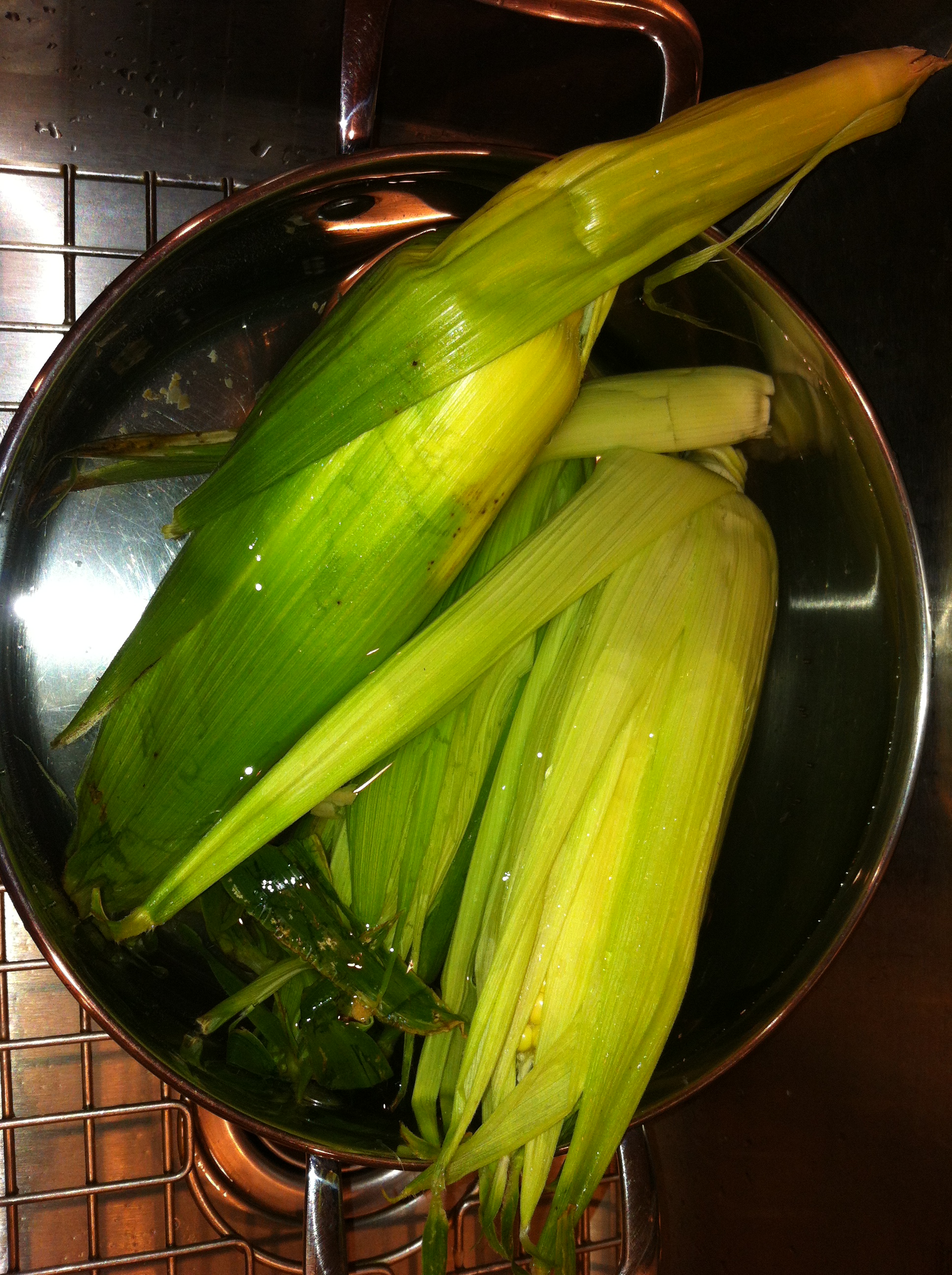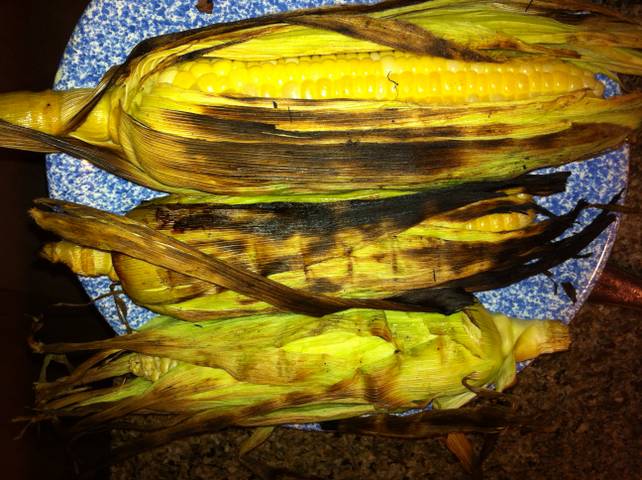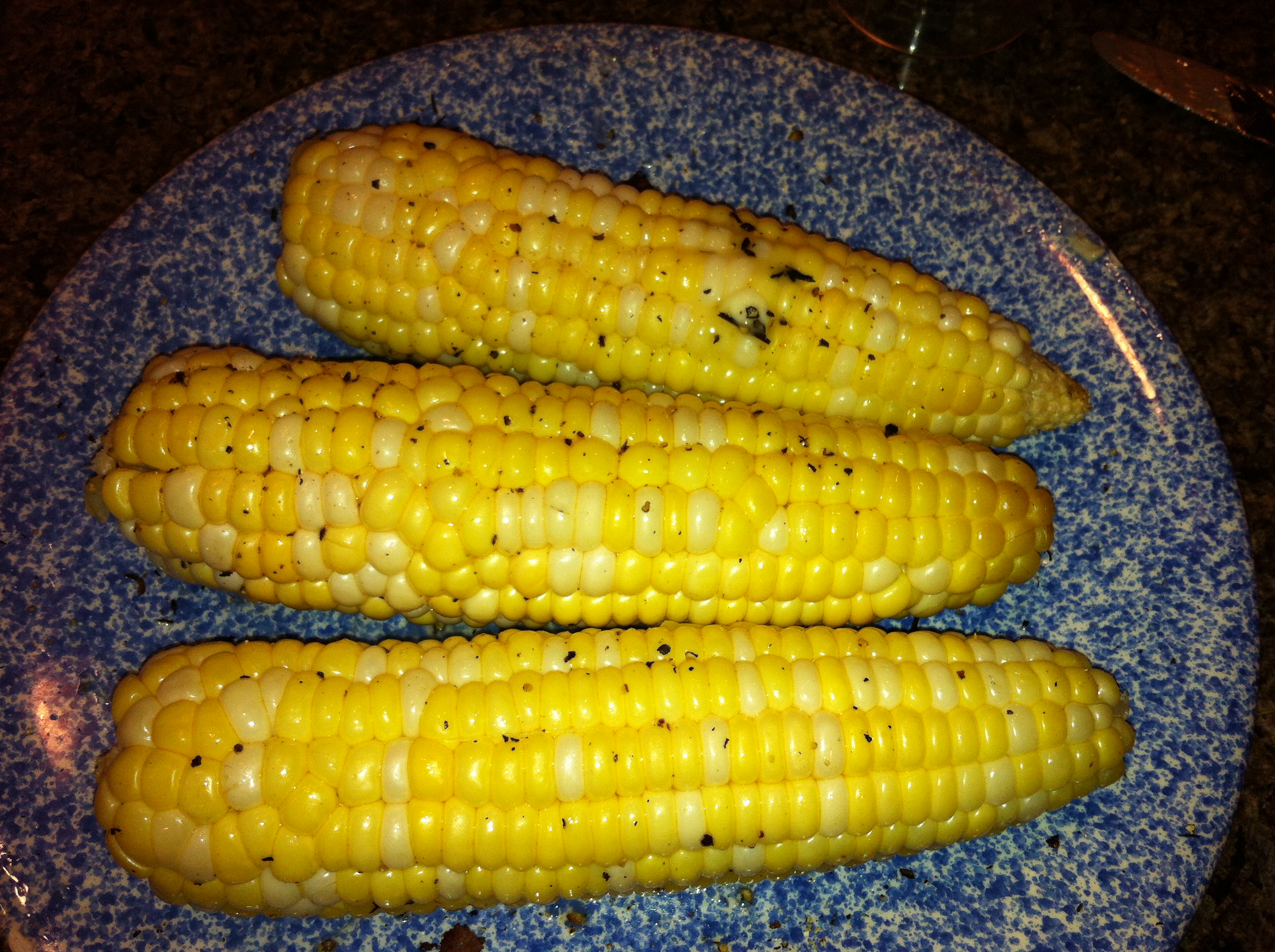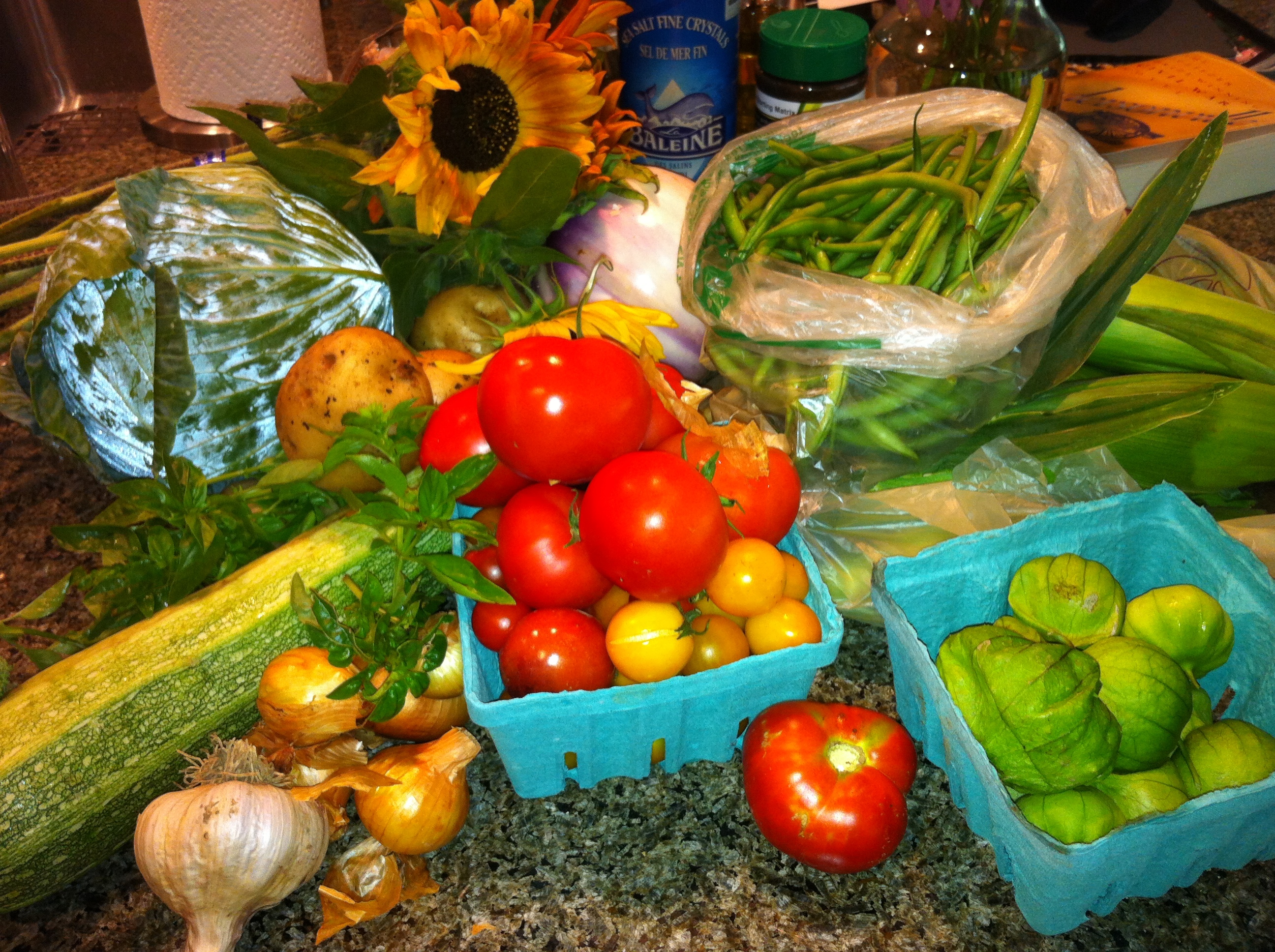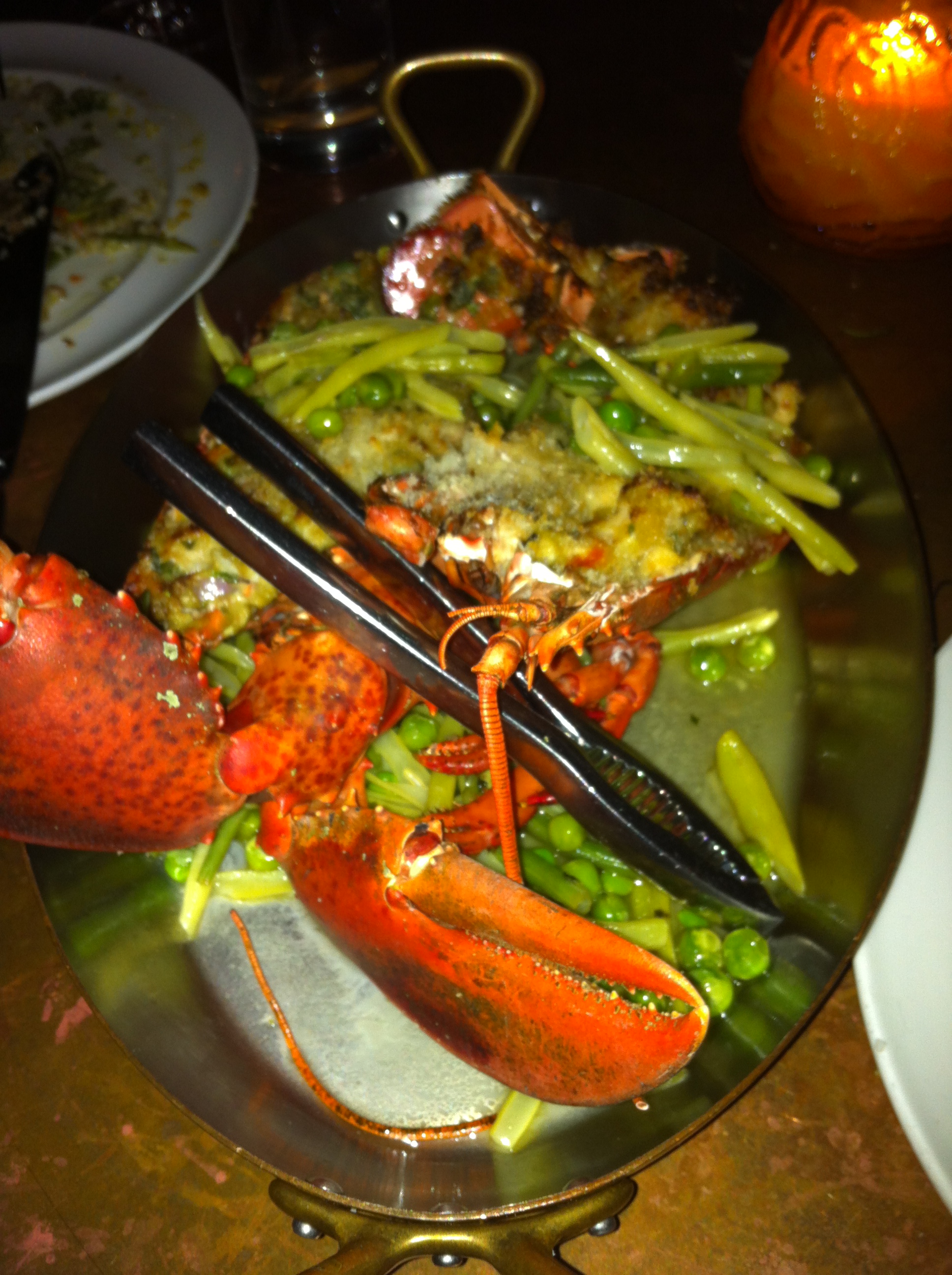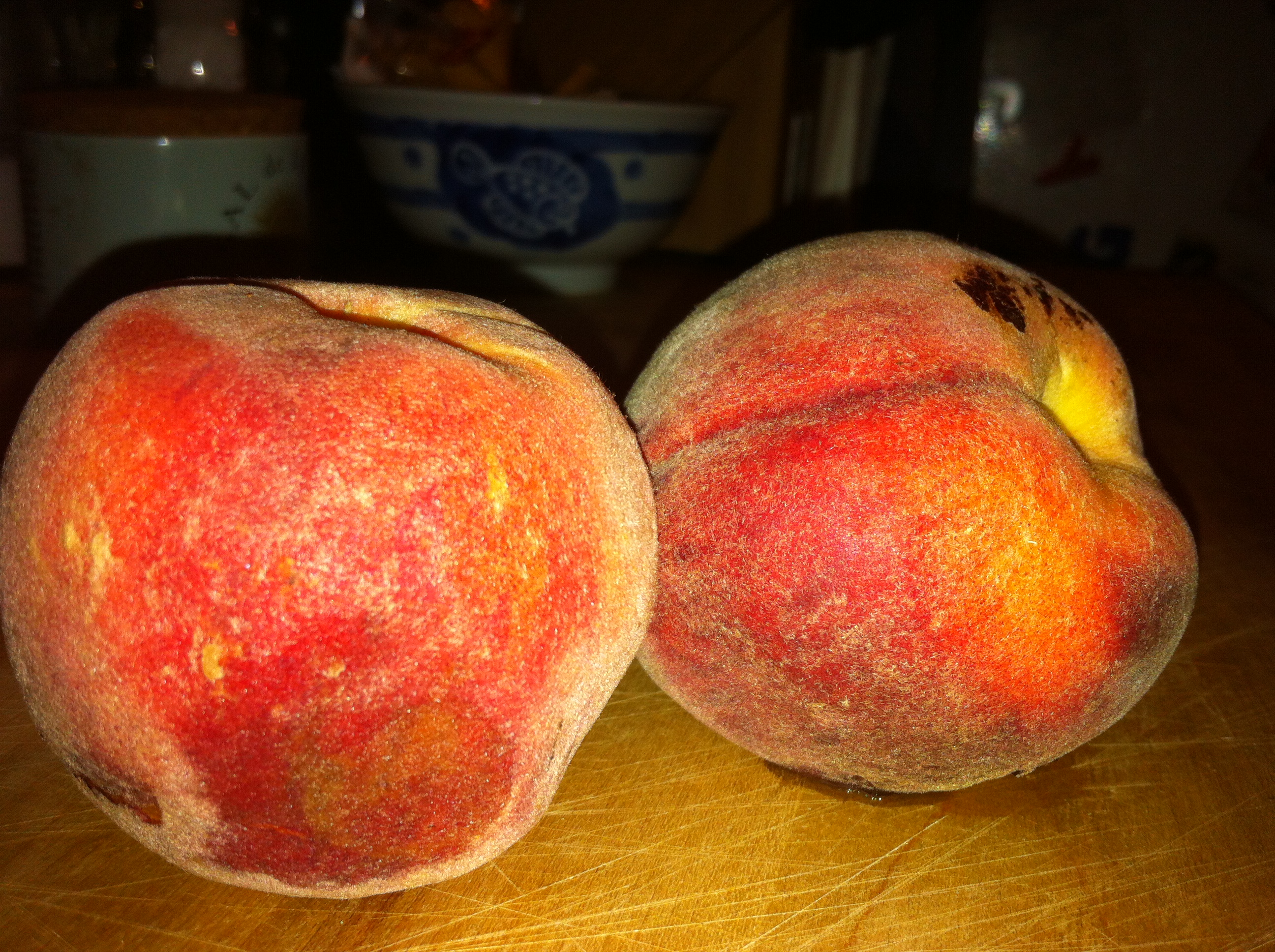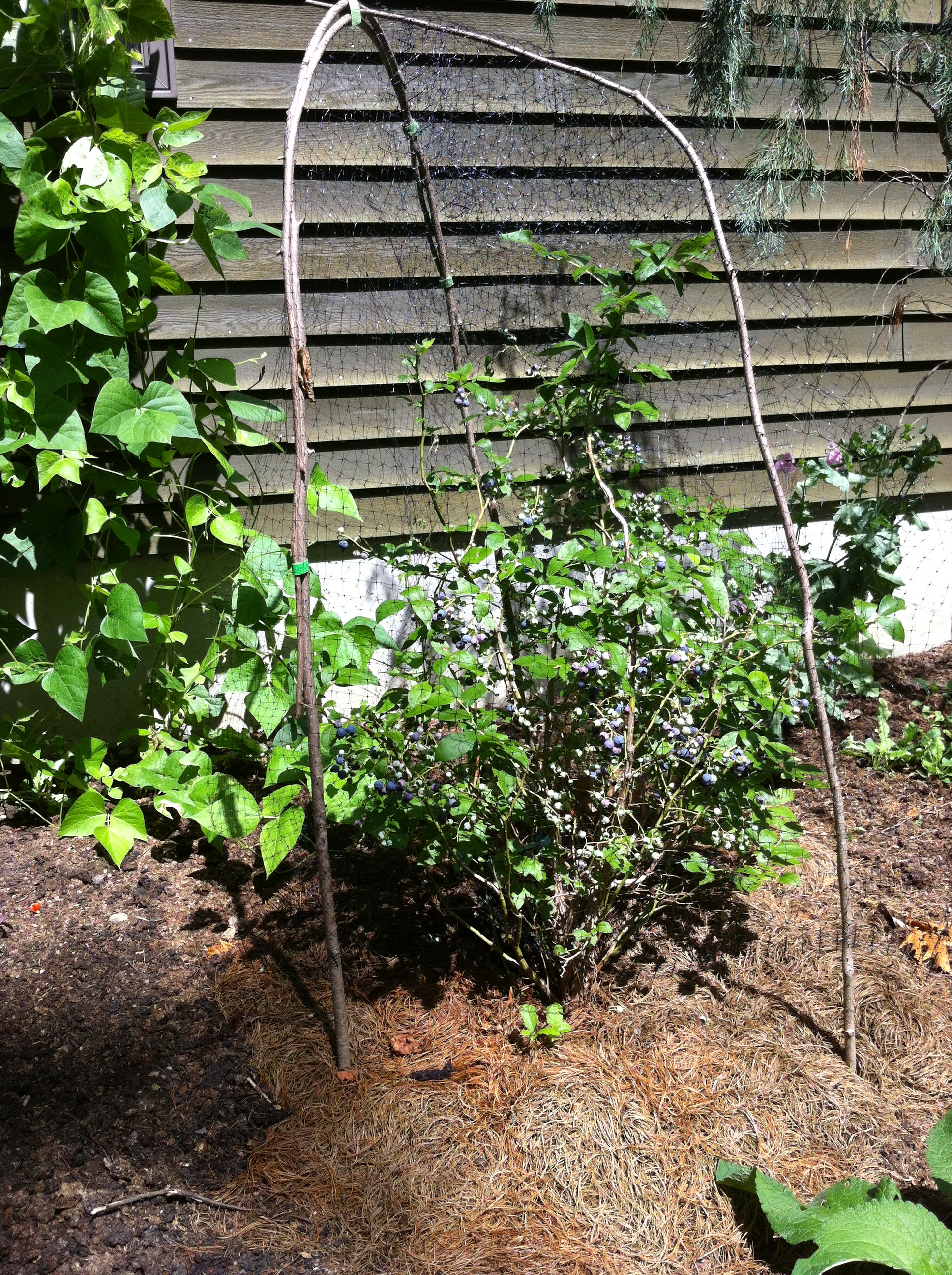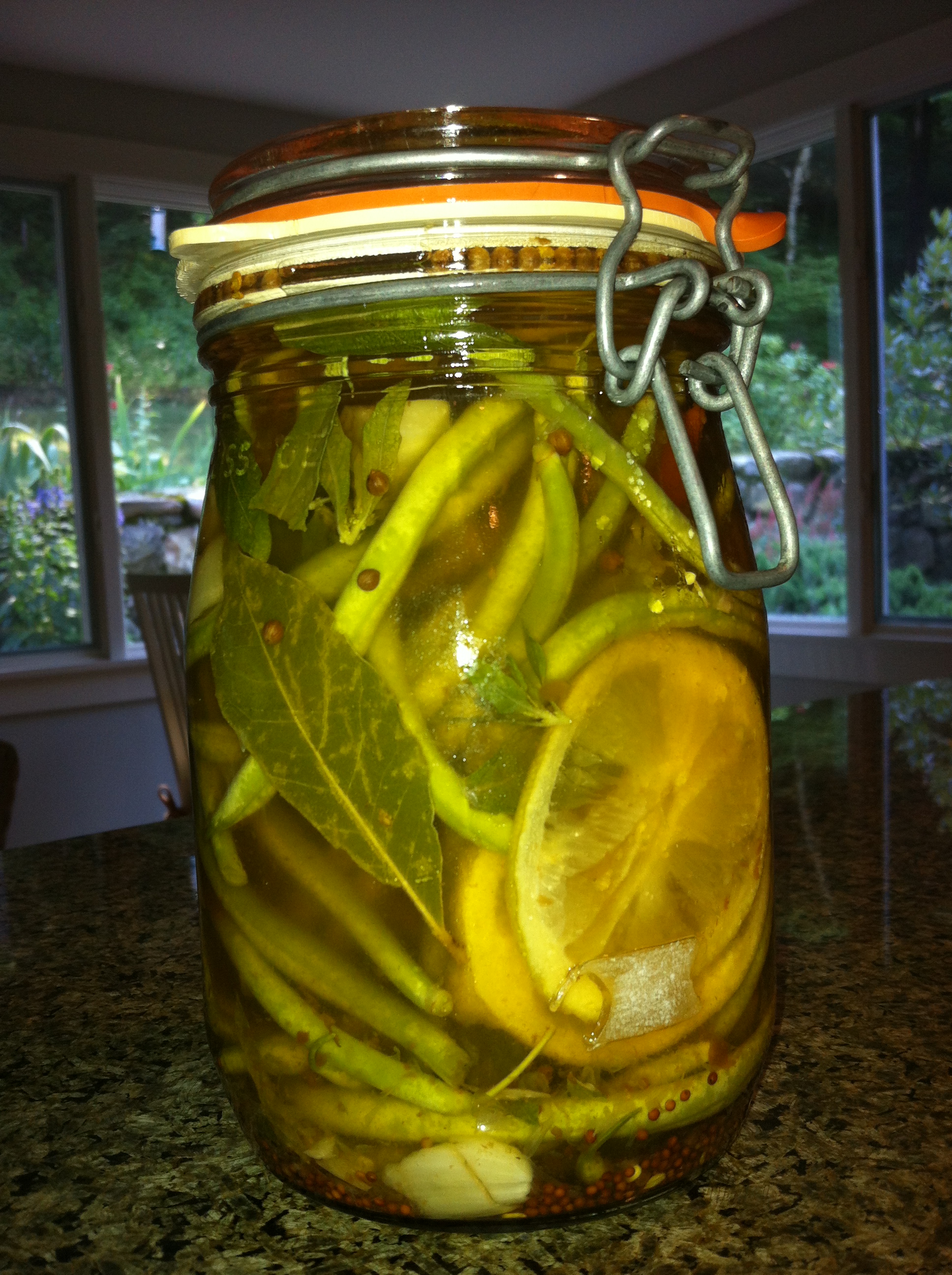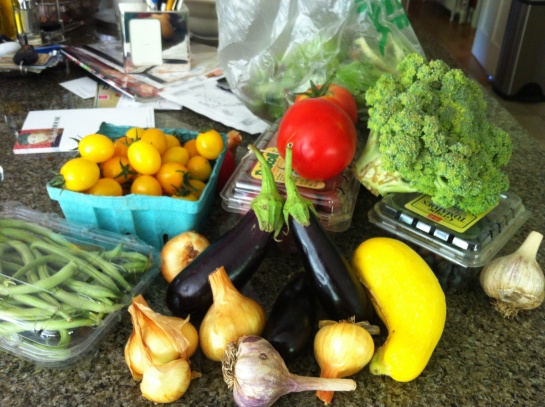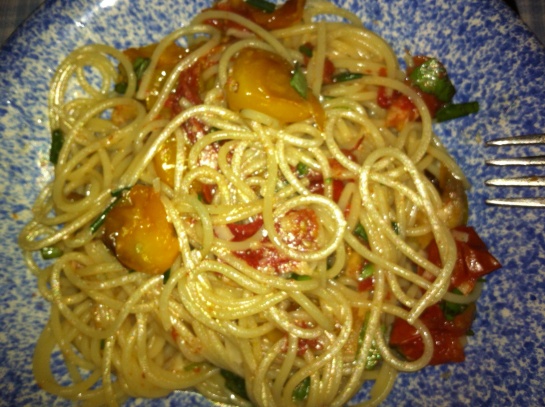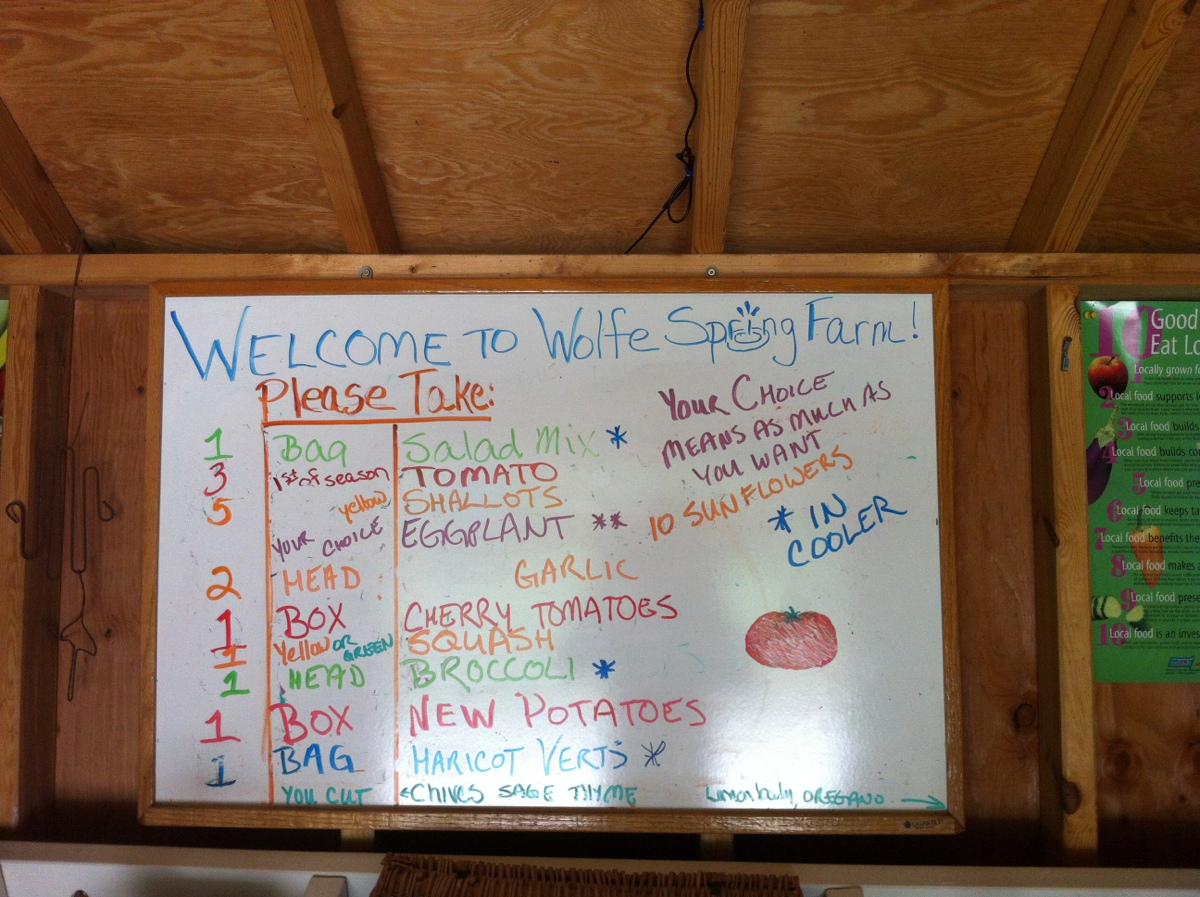Ever heard of “Early Drought Corn”? Well, that’s what we picked up today at the Farm. Unfamiliar phrase to me as well, but the result of all the intense heat and sun combined with below average rainfall means that the first corn cobs of the season are small, not super flavorful and even kind of ugly.
We had our first of the season local corn on the cob last night purchased from the Amenia Farmers Market in Dutchess County, NY. We soaked the ears, grilled them and then slathered them with butter, salt and pepper. They were good, not great.
Today’s haul of 8 ears from Wolfe Spring Farm had a similarly undernourished look to last night’s, so we decided better to cook with them than feature them in all their glory ‘naked’ on the cob. I decided on a corn chowder and combined 2 recipes to make my own: this recipe from Mark Bittman’s Minimalist column and this recipe from the Red Cat Cookbook. I like Bittman’s recipe because he makes a rustic ‘broth’ from the corn cobs and I like the Red Cat’s recipe because they add a little heat. Here’s my adaptation.
Early Corn Chowder
- 6-8 ears corn
- 1 tablespoon butter
- 1 medium onion, chopped
- 1 shallot [I used this because we have them from today’s CSA pick-up, but not necessary]
- 4 medium new potatoes, peeled and chopped into 1/2 cubes
- 2 dried peppers
- Salt and freshly ground black pepper
- 2-3 small tomatoes cored and seeds removed, optional [I used them as I had tomatoes in my pick-up, but not necessary]
- 1 cup milk
- handful of fresh chives, optional
Instructions:
1. Shuck the corn and use a paring knife to strip the kernels into a bowl. Put the cobs in a pot with 6-8 cups water; bring to a boil, cover, and simmer for 10-20 minutes.
2. Melt the butter in a large saucepan or soup pot and turn the heat to medium-high. When the butter melts, add the onion and shallots, along with a sprinkling of salt and pepper. Cook, stirring occasionally, until the onion softens, about 5 minutes; then add the potatoes and saute another 5 minutes; add the tomatoes if you’re using them and cook, stirring, for another minute or two. Add the dried peppers, crushing them if you like more heat.
3. After the corn cobs have cooked for at least 10 minutes, strain the liquid into the onion-potato mixture. Bring to a boil, then turn the heat down so the mixture simmers. When the potatoes are tender, about 10 minutes, add the corn kernels and milk and heat through. Taste and adjust seasoning if necessary. Can be prepared in advance and served at room temperature or chilled. If you like a creamier soup, you can puree the soup partially with a stick blender, and/or use 1/2 cup of heavy cream in place of 1/2 cup of the milk. Garnish with the chives, and serve.
It’s still early days for the corn season. Please share your favorite recipes, too.

